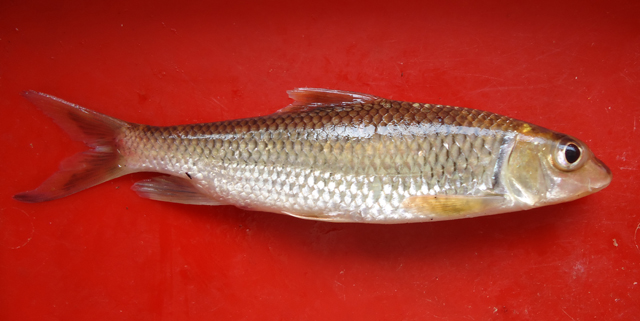| Cyprinidae (Minnows or carps), subfamily: Torinae |
| 120 cm TL (male/unsexed) |
|
benthopelagic; freshwater, potamodromous |
| Asia: India. |
|
This species is distinguished from its congeners by the following combination of characters: with maxillary barbels, but no rostral barbels; last simple dorsal ray is weak and smooth; complete lateral line with 41-43 +1 pored scales; transverse scales from dorsal-fin origin to pelvic fin origin 9-10/1/4½-5; scales between lateral line and anal-fin origin 5½-6; gill rakers are long and branched; proximal end of fifth ceratobranchial hook shaped, with 5+3+2 teeth; behind opercle is a black bar, prominent in juvenile specimens (less than ca 10.0 cm SL), and becoming progressively fainter in mature specimens; all fins pale yellow, red pigments on interradial membranes in large (more than ca 20.0 cm SL) individuals (Ref. 94728). |
| Occurs in rivers, usually in deep pools and shady parts in the hilly regions. Lives and breeds in hilly terrain but comes down to tidal reaches for feeding. Spawns in small streams with sandy and weedy bottoms. Feeds mainly on algae and occasionally on insect larvae. |
|
Endangered (EN); Date assessed: 24 June 2010 (A2acd) Ref. (130435)
|
| harmless |
Source and more info: www.fishbase.org. For personal, classroom, and other internal use only. Not for publication.

